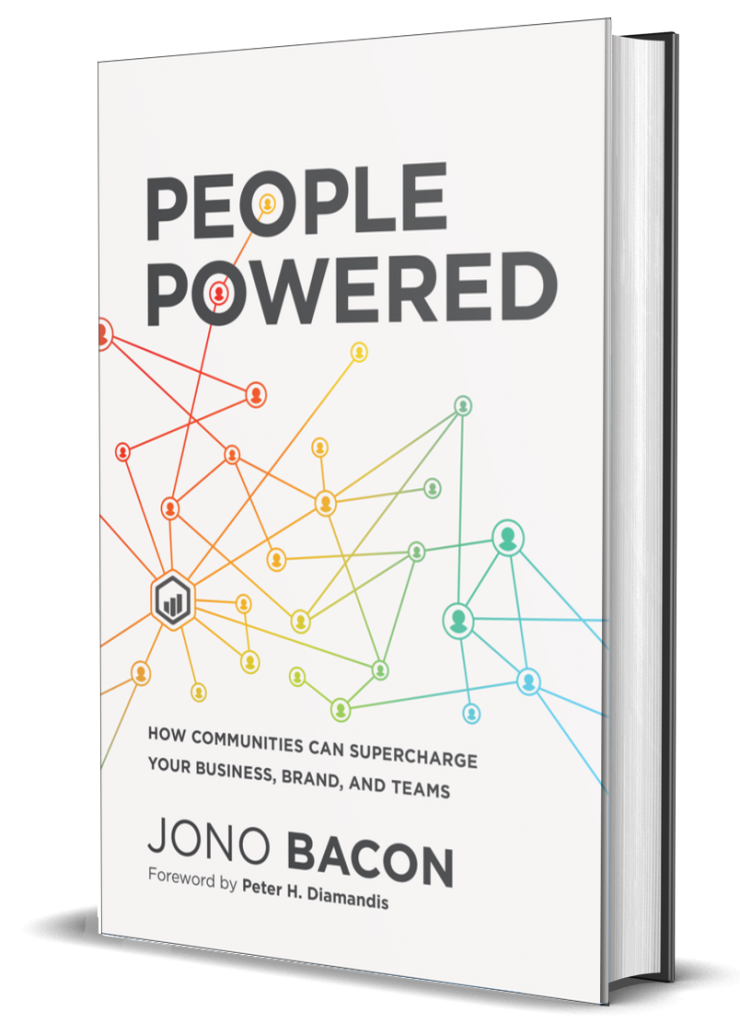I have recently picked up a copy of Jono Bacon’s “People Powered“. The book describes how communities can supercharge your business brand and teams.
Community groups can be an essential asset for corporate brands. They help build brand loyalty, drive engagement, increase customer satisfaction, and even generate leads and revenue.

There are several factors that distinguish community groups from regular communities, and brands must carefully consider how they approach online and offline communities in terms of customer data associated with community members.
Community groups can help corporate brands if they choose to create a community around products or services. Brands can engage with customers in a more personalized and authentic way through communities. Community groups allow customers to connect with one another and with the brand itself, especially if there is corporate sponsorship or representation. This fosters a sense of belonging and loyalty. Members of brand-centric groups are often passionate advocates for a brand and are able to help spread the word about the brand’s products and services to others in their social networks.
Community groups also provide valuable insights into customer needs and preferences. By engaging with members of the community and gathering feedback, brands are able to understand customers and tailor offerings to meet their needs. Additionally, community groups can be a source of user-generated content, which can be used to fuel social media campaigns and other marketing initiatives.
It is also important to note that community groups are different from regular communities in a number of ways; community groups are often created and managed by brands themselves, whereas regular communities may be more organic and arise spontaneously around a shared interest or hobby. Brand-centric community groups are typically more focused on a specific brand or product, whereas regular communities may cover a broader range of topics.
Bacon cites several examples of online communities including Microsoft XBOX Live, Random House, SAP and Salesforce.
Another key difference is the level of control that brands have over community groups. While brands can create guidelines and rules for behavior within the group, they must also allow members to express their opinions and engage in honest discussions. Brands must be careful not to come across as too controlling or manipulative, as this can undermine trust and credibility within the community.
When thinking about online and offline communities in the context of customer data, brands must take care to protect customer privacy and ensure that any data that is collected is used ethically and transparently. A Customer Master Data Management platform like the Pretectum CMDM helps in this area. Online communities can generate a wealth of customer data, including demographic information, preferences, and purchase history. Brands can use this data to create more personalized experiences for community members, but they must also be careful not to cross any privacy boundaries.
Offline communities can also provide valuable customer data, but overstepping bounds is equally if not more important when people are meeting physically and not just virtually. If a brand creates an in-person community event, it must ensure that any data collected is used only for the purpose for which it was collected and that customers are aware of how their data will be used.
For a community to be particularly successful Bacon says one should establish six value-based aspirational goals for a brand-based community. These goals likely need to embrace distinctive access, facilitating contributions, mutual respect, sustaining dignity, making an impact, and providing a forum for a feeling of belonging.
Community groups can be a valuable asset for corporate brands, but brands must take care in considering how they approach these groups and how they handle customer data associated with community members. Pretectum CMDM can help. Brands must create a sense of belonging and foster engagement within these groups, while also respecting members’ privacy and autonomy. By doing so, brands can build long-lasting relationships with their customers and generate real business value.

